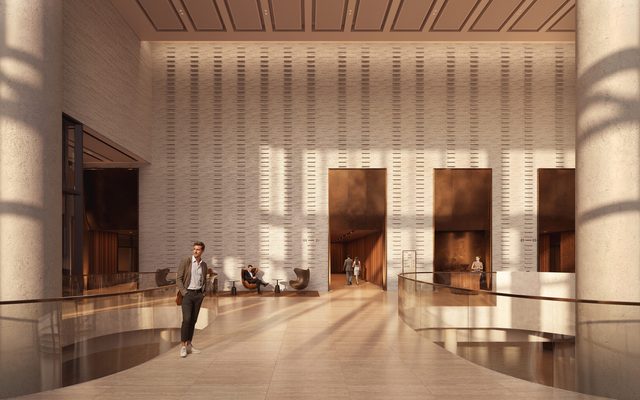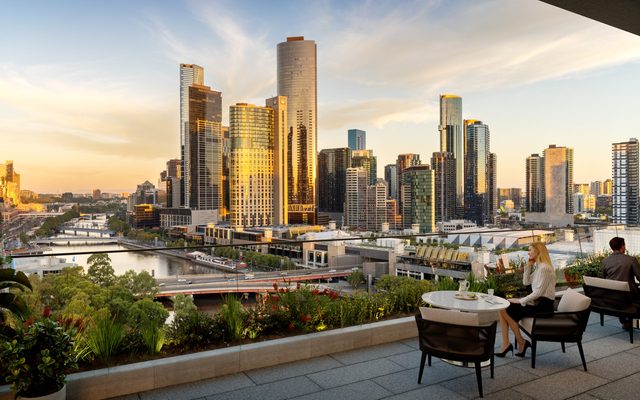This article is from the Australian Property Journal archive
THE seismic shift towards working from home has seen more people move towards the outer suburban and regional areas, keeping inner city dwellings vacancies elevated, while Queensland’s recorded its tightest rate since the global financial crisis.
The latest data from SQM Research showed the national residential rental vacancy rate recorded a small decrease over the month, from 2.2% in June to 2.1% in July, with the total at 71,760 empty properties.
This time last year, the national vacancy rate was slightly higher at 2.3%.
All capital cities recorded declines in vacancy rates over the month, except for Melbourne which recorded a 0.1% uplift to 3.1% for July. Sydney has the highest vacancy rate in the nation, down 0.2% to 3.6%, while Hobart is home to the tightest, down to 0.7%. Darwin recorded the largest decline, firming 0.4% to 1.4%.
Across the CBDs, Sydney CBD vacancies fell 0.6% but is still at a remarkably high to 13.2%, and Brisbane CBD decreased from 14.0% to 13.0%. Melbourne’s CBD was steady at 8.8%.
Increases were seen in the Adelaide CBD, from 7.1% to 7.6%, and the Perth CBD rose from 5.3% to 5.5%.
“We are now observing a clear trend of reduced rental vacancies in outer suburban locations and regional locations around Australia,” Louis Christopher, managing director of SQM Research said.
“However, when looking into the numbers it is clear there are still very elevated levels of rental vacancies in the inner-city locations. We believe there has been a move towards outer regional living and away from high density areas. This very likely has been as a result of fears surrounding coronavirus and the ability for many employees (particularly in the corporate sector) to work remotely.”
Asking rents ease
Sydney, Melbourne and Brisbane recorded declines in asking rents for both houses and units over the month during the month. Melbourne recorded the highest decrease, of 1.4% in both sectors.
Meanwhile, Perth, Adelaide, Canberra, Darwin and Hobart all recorded increases in house and unit asking rents. Perth recorded the highest increase in asking rents for houses, at 3.2%, and asking prices in Hobart increased 5.9%.
In annual terms, Sydney, Melbourne, Darwin and Hobart recorded declines in asking rents for both houses and units. Sydney posted a 7.8% fall for houses and 6.8% decline for units.
Queensland market tightest since GFC
According to the Real Estate Institute of Queensland, around 70% of the state’s rental market currently faces the tightest conditions seen in Queensland since the Global Financial Crisis.
Over 36% of Queensland’s population – about 1.2 million people – rent their home. The state’s regional areas are currently out-performing major metropolitan areas when it comes to rental demand, REIQ June quarter data shows, with 18% of Queensland regions experiencing less than 1% vacancy at present. Vacancies are at an eye watering 0.4% in Maryborough, and just a tick higher on the Fraser Coast and Mount Isa (0.5%). Gympie was at 0.9% and Rockhampton 0.7%.
It’s also slim pickings across many popular regions including Caboolture (1.2%), Fraser Coast (1.2%), Mackay (1.3%), Sunshine Coast (1.9%) and Townsville (1.7%), Rates are only marginally higher in Cairns (2.4%), Gladstone (2.0%) and Noosa (2.4%).
The outer regions of Brisbane show fluctuations from region to region. Ipswich is at 1.9%, Logan 2.2%, Moreton Bay 1.4% and Redland City 1.3%.
Inside Brisbane’s five kilometre city circle the mean vacancy is 3.9%, making it the state’s only weak rental market for the quarter. This is heavily concentrated on postcode 4000’s rate of 13%, significantly higher including 4005 (New Farm and Teneriffe, at 2.6%), 4006 (Bowen Hills, Fortitude Valley, Herston, Newstead at 7.9%), 4059 (Kelvin Grove and Red Hill at 4.9%), 4064 (Milton and Paddington at 3.3%) and 4101 (South Brisbane, Highgate Hill, West End at 9.2%).
REIQ chief executive officer, Antonia Mercorella said Brisbane CBD’s rental market has been hit harder due to the high number of renters facing financial stress due to change or loss of employment, a reduction in international tertiary students as well as permanent and temporary migrants, and a significant shift in short-term lets over to the longer-term rental market.
“It’s therefore likely we’ll see rents drop in the inner Brisbane areas which in turn will result in tenants eventually returning to the city. However, much of it will also depend on the commercial and retail sector’s ability to rebound.”
Mercorella said any further tightening in rental availability levels across the state would only place additional undue pressures on the housing sector “which is why more needs to be done to better support both increased and ongoing property investor activity in the Queensland property market and the contributions they make to the state economy”.
She said a lack of investment over the prior two decades means social housing is available mostly to those with the most complex and urgent needs. The state government’s current 2017-2027 housing strategy envisages greater movement of lower income households from social housing into the Queensland rental market.
“While there’s evidence of longer term renting of 10 or more years and some households facing the prospect of a lifelong tenure in this sector, what this suggests is that our rental market has changed from its historical role as a transitional housing sector for people moving into home ownership or social housing to a long-term housing sector for a significant number of Queensland households.
“It’s for these reasons rental vacancies can actually act as a barometer that measures the health of our property market.”




